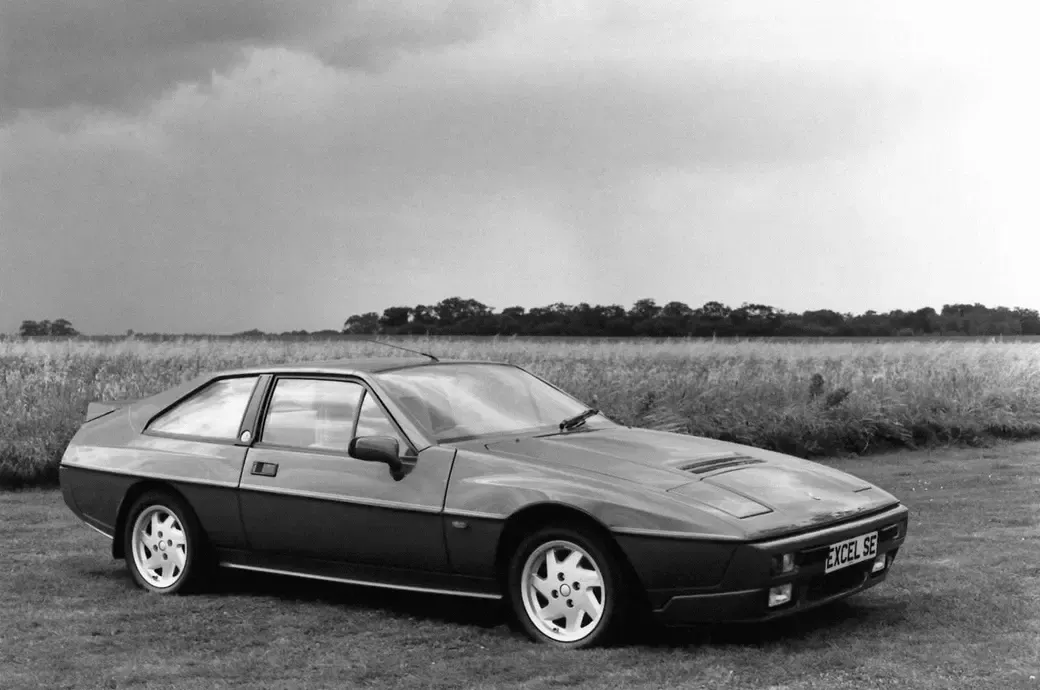The Folded Paper Revolution

Car design is like fashion. One minute, it's all about flowing curves; the next, it's as if everyone has forgotten how to draw anything but a straight line. In the early 1970s, the straight line was king. The new style was the "wedge," a look that involved designing a car with nothing more than a ruler. The Italians, of course, used it to create V12-powered doorstops for superstars. Even Aston Martin, normally fond of curves, had a brief, magnificent go with its shocking Lagonda saloon and the one-off Bulldog. But it was a small company in Norfolk, Lotus, that truly embraced this pointy new fad and made it its own.
The whole thing started when Colin Chapman, the famously obsessive boss of Lotus, teamed up with a young Italian design prodigy named Giorgetto Giugiaro. Chapman needed a futuristic replacement for his ageing Europa sports car. Giugiaro presented him with a concept that was essentially a razor-sharp wedge. Chapman, an engineer who viewed anything that disturbed the air with deep suspicion, was initially unconvinced by the aerodynamic purity of Giugiaro's sharp edges. But the prototype caused such a riot at the 1972 Turin Motor Show that even he had to admit Giugiaro was onto something.
A Sensible Wedge? The Elite and Eclat
The Elite & Eclat While the mid-engined Esprit was battling secret agents, Lotus was also applying the same pointy design language to a new range of luxurious, front-engined grand tourers. This was a uniquely British take on the wedge phenomenon. While an Italian supercar was a selfish two-seater, Lotus used the same angular styling to create a practical four-seater GT for the enthusiast who had, inconveniently, acquired a family. The 1974 Lotus Elite was a four-seater "shooting brake" with a distinctive but functional profile.
It was followed by the prettier Eclat, which had a sleeker fastback body. These were cars that offered Lotus's excellent handling and a wedge shape, but with enough room in the back for the kids.
The Esprit: The Thinking Man's Supercar
The first and most famous product of this new philosophy was the 1976 Lotus Esprit. Giugiaro gave Lotus a shape that looked like the future. It had the impact of a Lamborghini Countach but was executed with Lotus's usual attention to detail. It was the thinking man's wedge.
The car became famous, however, thanks to a particularly brilliant piece of unsolicited marketing. The story goes that Lotus's PR man heard the new James Bond film was in pre-production, so he drove an un-badged pre-production Esprit to the film studios and simply parked it right outside the producers' office window. They took one look at its futuristic shape, and the deal was done. The resulting sequence in The Spy Who Loved Me, where the Esprit transforms into a submarine, made it a proper bedroom-wall-poster car for a generation.
The Essex: Adding Hair to the Chest
The early Esprit had a problem, however. It had the looks of a supercar, but its four-cylinder engine, while willing, lacked the brute force to back up the visual threat. That all changed in 1980. Lotus had secured a huge sponsorship deal for its Formula One team from a flamboyant oil company called Essex Petroleum. To celebrate, they launched the Turbo Esprit in the race team's magnificent livery of metallic blue, red, and chrome.
The Essex Turbo was the moment the Esprit finally grew a proper chest. The new 2.2-litre turbocharged engine gave the car the savage punch it had always deserved, and a new, stiffer chassis meant it could handle it. This new, more aggressive Esprit was, naturally, immediately cast as James Bond's new car in For Your Eyes Only. The Essex was a brief, glorious, and very loud celebration of 80s excess, and it set the template for all the fast Esprits that would follow.
The Japanese Alliance
The last car in the Lotus wedge story was the Excel of 1982. This was an evolution of the Eclat, but it contained a secret ingredient that was, to the purists, deeply troubling: a large number of parts from Toyota. Lotus, in a rare admission that other people might be better at some things, decided that Japanese gearboxes and electrics were preferable to their own. The Excel used a superb Toyota five-speed gearbox, differential, and many other components. The result was a car that had all the handling genius and stylistic flair of a Lotus, with the added, and very welcome, bonus that it would actually work.
The End of the Pointy Era
By the early 1990s, the fashion had changed again. The sharp, angular lines of the 70s and 80s were out, and car design rediscovered the curve. Lotus moved on to the beautiful, rounded shapes of the new Elan and the Elise. But the wedge period had been a crucial one. It was the era when Lotus grew up, transforming from a builder of tiny, minimalist sports cars into a proper, grown-up manufacturer of world-class supercars, and for the first time, focused on building a car that might not fall apart.







